Enlighten Biology Note on Phylum Echinodermata and its Class of Organisms.
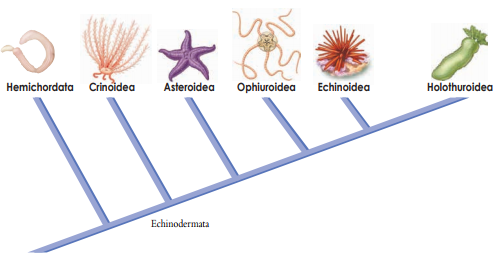
Enlighten Biology Note on Phylum Echinodermata and its Class of Organisms.
General Characteristics
- Echinoderms are slow-moving or sessile marine animals.
- Echinoderms have a coelom.
- A thin epidermis covers an endoskeleton of hard calcareous plates, and most species are prickly from skeletal bumps and spines.
- Unique to echinoderms is the water vascular system, a network of hydraulic canals branching into extensions called tube feet that function in locomotion and feeding.
- Sexual reproduction of echinoderms usually involves separate male and female individuals that release their gametes into the water.
- Echinoderms descended from bilaterally symmetrical ancestors, yet on first inspection most species seem to have a radially symmetrical form.
- The internal and external parts of most adult echinoderms radiate from the center, often as five spokes.
- However, echinoderm larvae have bilateral symmetry.
- Furthermore, the symmetry of adult echinoderms is not truly radial.
- For example, the opening (madreporite) of a sea star’s water vascular system is not central but shifted to one side.
- Echinoderms do not have a respiratory, excretory, or circulatory system.
- Fluids within the coelomic cavity and the water vascular system carry out many of these functions.
- For example, gas exchange occurs across the skin gills and the tube feet.
- Nitrogenous wastes diffuse through the coelomic fluid and the body wall.
- Cilia on the peritoneum lining the coelom keep the coelomic fluid moving.
Living echinoderms are divided into five Classes.
Class Asteroidea (Sea Stars and Sea Daisies).
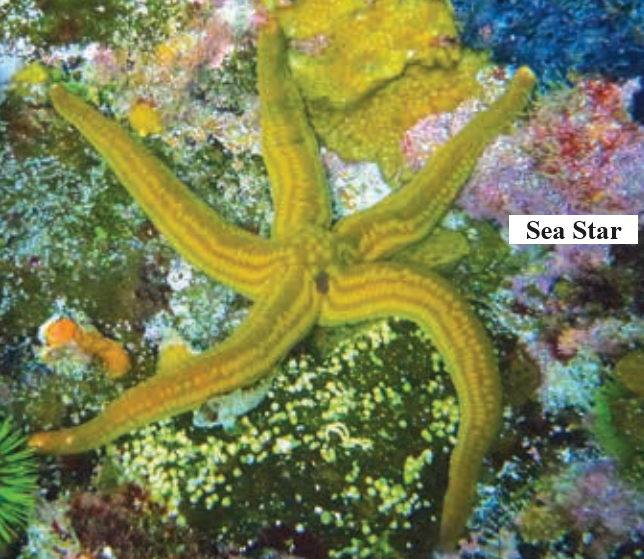
- Sea stars have arms radiating from a central disk.
- The undersurfaces of the arms bear tube feet.
- By a combination of muscular and chemical actions, the tube feet can attach to or detach from a substrate.
- The sea star adheres firmly to rocks or creeps along slowly as its tube feet extend, grip, release, extend, and grip again.
- Although the base of the tube foot has a flattened disk that resembles a suction cup, the gripping action results from adhesive chemicals, not suction.
- Sea stars also use their tube feet to grasp prey, such as clams and oysters.
- The arms of the sea star embrace the closed bivalve, clinging tightly with their tube feet.
- The sea star then turns part of its stomach inside out, entering it through its mouth and into the narrow opening between the halves of the bivalve’s shell.
- Next, the digestive system of the sea star secretes juices that begin digesting the mollusc within its shell.
- The sea star then brings its stomach back inside its body, where digestion of the mollusc’s (now liquefied) body is completed.
- The ability to begin the digestive process outside of its body allows a sea star to consume bivalves and other prey species that are much larger than its mouth.
- Sea stars and some other echinoderms have considerable powers of regeneration.
- Sea stars can regrow lost arms, and members of one genus can even regrow an entire body from a single arm if part of the central disk remains attached.
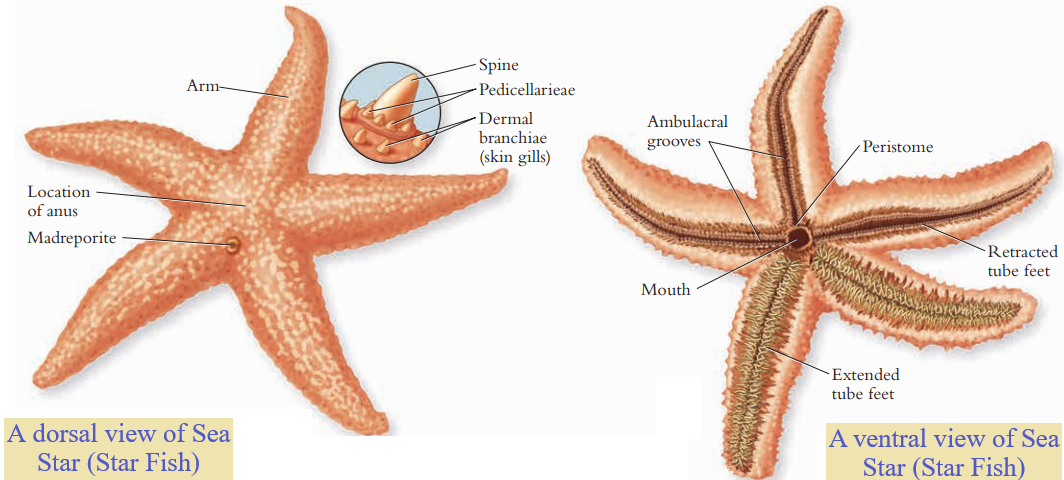
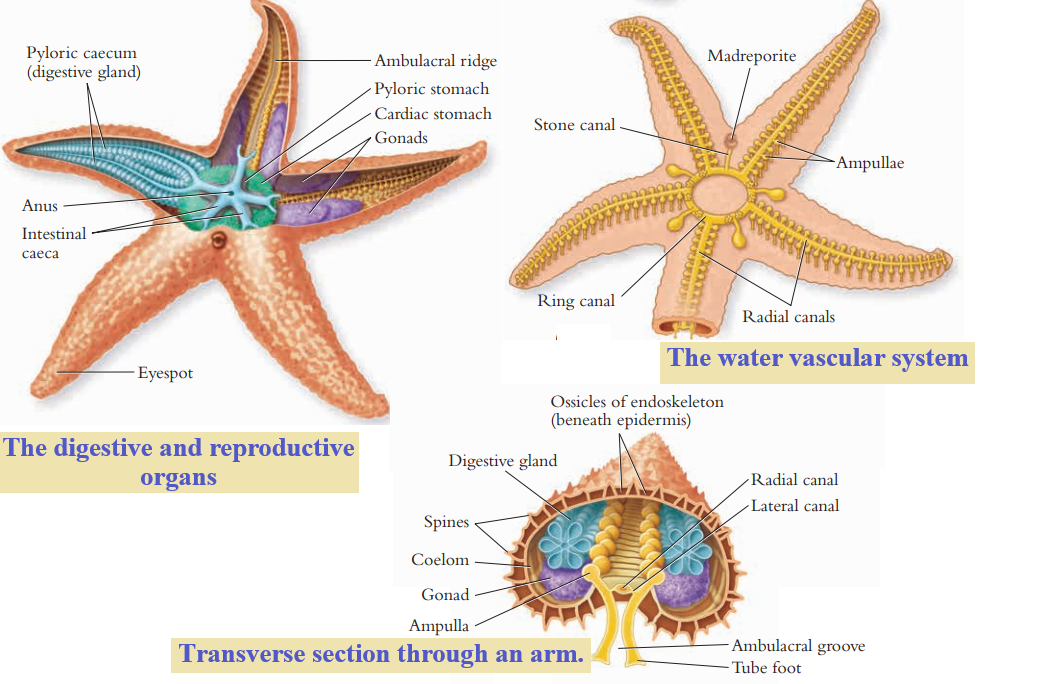
- The Class Asteroidea, to which sea stars belong, also includes a small group of armless species, the sea daisies.
- Only three species of sea daisies are known, all of which live on submerged wood.
- A sea daisy’s body is typically disk-shaped.
- It has a five-sided organization and measures less than a centimetre in diameter.
- The edge of the body is ringed with small spines.
- Sea daisies absorb nutrients through a membrane that surrounds their body.
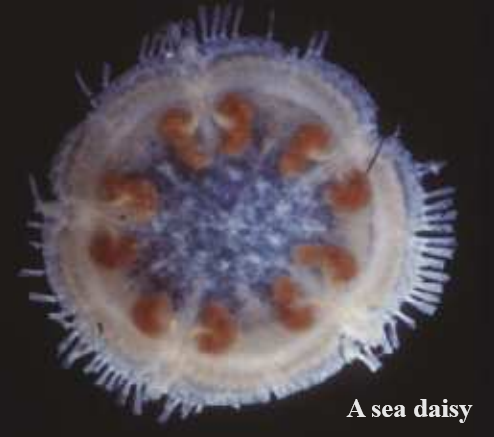
Class Ophiuroidea (Brittle Stars)
- Brittle stars have a distinct central disk and long, flexible arms.
- They move primarily by lashing their arms in serpentine movements.
- The base of a brittle star tube foot lacks the flattened disk found in sea stars but does secrete adhesive chemicals.
- Hence, like sea stars and other echinoderms, brittle stars can use their tube feet to grip substrates.
- Some species are suspension feeders, others are predators or scavengers.
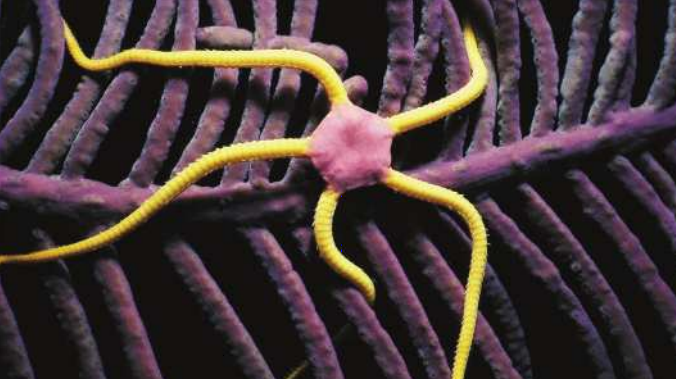
Echinoidea (Sea Urchins and Sand Dollars)
- Sea urchins and sand dollars have no arms, but they do have five radially arranged groups of tube feet that function in slow movement.
- Sea urchins also have muscles that pivot their long spines, which aid in locomotion as well as protection.
- A sea urchin’s mouth, located on its underside, is ringed by highly complex, jaw-like structures that are well adapted to eating seaweed.
- Sea urchins are roughly spherical, whereas sand dollars are flat disks.
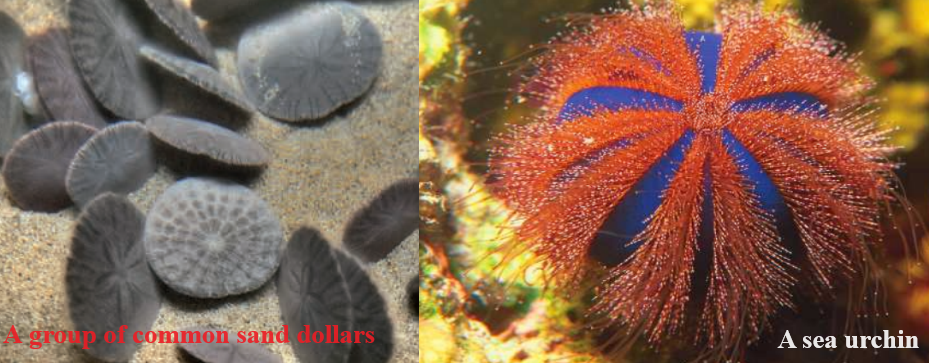
Class Crinoidea (Sea Lilies and Feather Stars)
- Sea lilies live attached to the substrate by a stalk.
- Feather stars crawl about by using their long, flexible arms.
- Both use their arms in suspension feeding.
- The arms encircle the mouth, which is directed upward, away from the substrate.
- Crinoidea is an ancient group whose morphology has changed little over the course of evolution; fossilized sea lilies some 500 million years old are extremely similar to present-day members of the class.

Class Holothuroidea (Sea Cucumbers)
- On casual inspection, sea cucumbers do not look much like other echinoderms.
- They lack spines, and their endoskeleton is much reduced.
- They are also elongated in their oral-aboral axis, giving them the shape for which they are named and further disguising their relationship to sea stars and sea urchins.
- Closer examination, however, reveals that sea cucumbers have five radially arranged sections of tube feet, as in other echinoderms.
- Some of the tube feet around the mouth are developed as feeding tentacles.
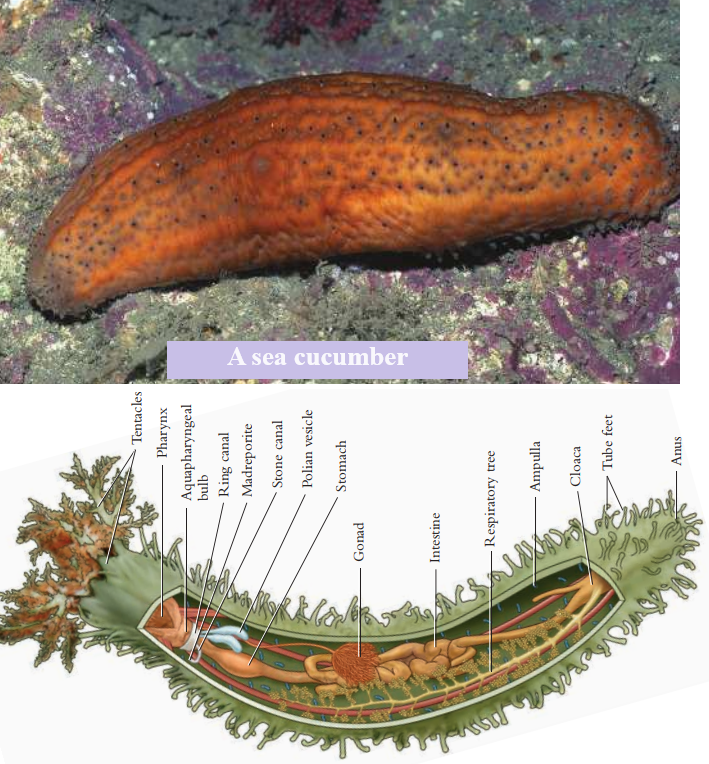
Join Enlighten Knowledge WhatsApp platform.
Join Enlighten Knowledge Telegram platform.





